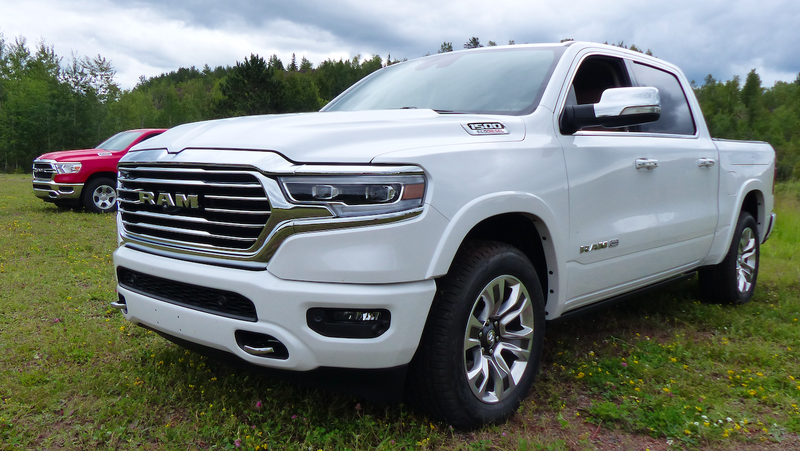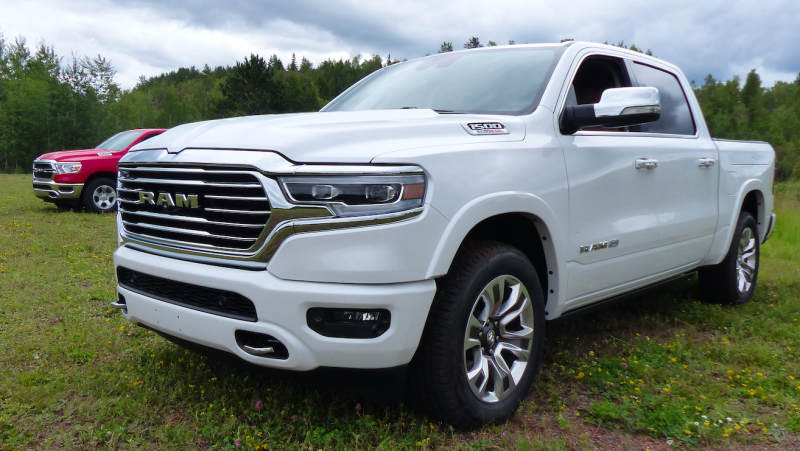
 Truck YeahThe trucks are good!
Truck YeahThe trucks are good!Back in June, Ram announced that its newest generation Ram EcoDiesel was “expected to lead the segment on fuel economy.” Then in July, Chevy dropped a bombshell: Its new inline-six diesel Silverado pickup had scored an incredible 33 mpg highway. Now the Ram’s EPA numbers are out, and while good, they aren’t best-in-class.
Give credit where it’s due: Chevrolet got 33 mpg highway, 23 mpg city, and 27 mpg combinedout of a big-ass pickup. Regardless of how this translates to real-world usage, this is just impressive, which is why Chevy deserves to have a little laugh at Ram’s expense. That’s because, after Ram said it expected its latest “DT” Ram EcoDiesel—with its new “third-generation” 3.0-liter diesel V6—to lead the segment in fuel economy, the numbers are out showing that Chevy is still on top. Just as I expected.
Advertisement
The Ram’s EPA fuel economy numbers are still damn good, with the two-wheel drive variant rated at 32 mpg highway, 22 mpg city, and 26 mpg combined—a single mpg below the Chevy in all categories. In four-wheel drive form, the Ram’s figures drop to 29 mpg highway, 21 mpg city, and 24 mpg combined. That’s the same highway number as the 4×4 Silverado diesel, though the city rating is down by two and the combined figure is down one.
Both trucks handily outdo the F-150 diesel on the highway, though in the city, only the Chevy pulls away from FoMoCo, whose compression-ignition truck is rated at 30 mpg highway, 22 mpg city, and 25 mpg combined in 4×2 guise and 28 mpg highway, 21 mpg city, and 24 mpg combined as a 4×4.
Part of me wants to just leave it at that—the Ram failed to score best-in-class fuel economy, and that’s that. After all, when automakers advertise “best-in-class,” as they love to do, it often comes with zero context. Is number A larger than number B? If so, state “best-in-class” in the advertisement, and move on.
Advertisement
But I won’t do that, because, as we’ve stated before, “best-in-class” is in some ways a misleading, bullshit phrase. Smart truck-buying decisions are made by evaluating vehicles holistically. So yes, the Ram may not manage as high EPA fuel economy figures as the Chevy—and hell, at 260 horsepower, it’s even 17 HP down on the Chevy (but 27 HP up on the F-150) —but at 480 lb-ft, it does make 20 lb-ft more torque than the Chevy and 40 more than the F-150 diesel.
Plus, at 12,560 pounds, the Ram’s max trailer weight rating is over 3,000 pounds higher than the Chevy’s 9,300 pounds figure(which applies to the 4×4—the 4×2 gets a lower 7,600 poundrating) and over 1,000 more than the Ford’s 11,500 rating. Plus, you can get into a diesel Ram 1500 for under $40,000 including destination charge, whereas buying Ford and Chevy half-ton torque-monsters requires quite a bit more cash.
Advertisement
As for payload, the Ram is rated as high as 2,040 pounds, the Ford F-150 diesel is said to haul up to 2,020 pounds, and the 4×2 Chevy is listed on the automaker’s consumer website as capable of hauling up to a staggering 2,302 pounds.
So the Ford may seem a bit behind in some ways, but we’ve driven it and scored some pretty decent real-world towing fuel economy. It’ll be interesting to see how the three trucks compare under such conditions, outside of just EPA drive cycles.















